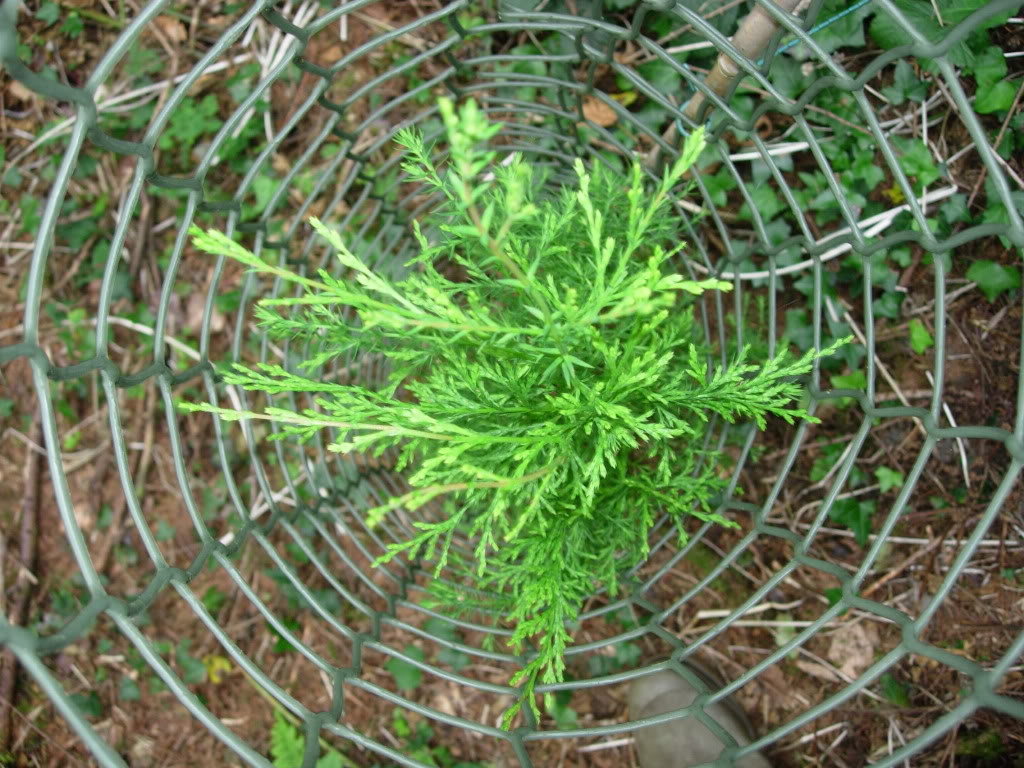Whitecedar
(Chamaecyparis thyoides henryae)

Description
Chamaecyparis thyoides (Atlantic white cedar, Atlantic white cypress, southern white cedar, whitecedar, or false-cypress), a species of Cupressaceae, is native to the Atlantic coast of North America and is found from southern Maine to Georgia and along the Gulf of Mexico coast from Florida to Mississippi. It is one of two species of Chamaecyparis found in North America. C. thyoides resides on the East Coast and C. lawsoniana can be found on the West Coast. There are two geographically isolated subspecies, treated by some botanists as distinct species, by others at just varietal rank: Chamaecyparis thyoides thyoides and Chamaecyparis thyoides henryae (H.L.Li) E.Murray (syn. Chamaecyparis thyoides subsp. henryae (H.L.Li) Little; Chamaecyparis henryae H.L.Li) The species grows in forested wetlands where they tend to dominate the canopy. The trees are associated with a wide variety of other wetland species because of their wide north-south range. The remaining populations are now found mostly in remote locations that would be difficult to harvest, so its popularity as a source of lumber has decreased. Chamaecyparis thyoides is an evergreen coniferous tree usually growing to 20�28 m (but may grow up to 35 m) tall with an average diameter of 0.8 m (2 ft 7 in), up to 2 m (6 ft 7 in), and feathery foliage in moderately flattened sprays, green to glaucous blue-green in color. The leaves are scale-like, 2�4 mm (3?32�5?32 in) long, and produced in opposite decussate pairs on somewhat flattened shoots; seedlings up to a year old have needle-like leaves. The tree is bare of branches for three-fourths of the trunk height and the bark can be ash-gray to reddish brown. Bark is smooth on juveniles, but mature trees have deep ridges and bark as thick as 5 cm (2 in). C. thyoides is monoecious, so a single tree will carry both the pollen and seeds needed for reproduction in cones. The seed cones are globose, 4�9 mm (5?32�11?32 in) diameter, with 6-10 scales (1-2 seeds per scale), green or purple, maturing to brown in 5�7 months after pollination. The pollen cones are yellow but turn brown as the tree matures, 1.5�3 mm (1?16�1?8 in) long and 1�2 mm (1?32�3?32 in) broad, releasing their yellow pollen once a year in spring. The tree begins bearing seeds at 4�5 years, but does not reach full maturity and start producing cones until it is 10-20 year olds. Seeds are dispersed nearly every year and travel by wind. Height and diameter of the tree increase steadily until the tree is 50 years old, at which point height growth slows. Both height and diameter no longer increase once the tree is 100 years old. Stands are generally all younger than 200 years, though some trees as old as a 1000 years have been reported. Because they have relatively shallow roots, C. thyoides are vulnerable to being blown over by wind
Taxonomic tree:







